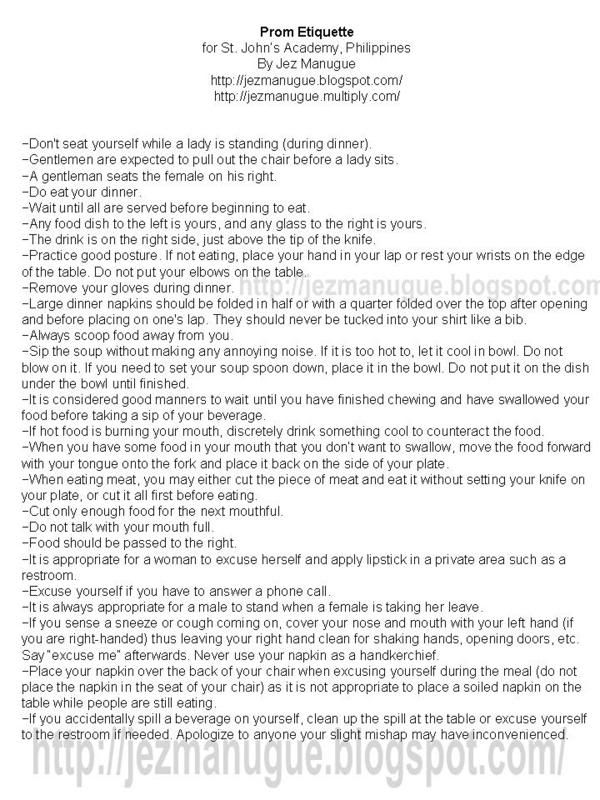 Are you a Type E Woman? or perhaps a potential one? Well, read on.
Are you a Type E Woman? or perhaps a potential one? Well, read on. The term Type E, which essentially identifies with being Everything to Everybody, is a concept of pop psychology. The idea of a Type E Woman was first read through a magazine’s cover story written by Harriet Braiker, author of the book The Type E* Woman, that tackles women and stress. She proposed that overstressed, high achieving women might better consider themselves as trapped in the catch of trying to be Everything to Everybody: Type E.
It should be noted, however, that the term “high-achieving” is referred to as a psychological state rather than as a social status. It refers to a pattern of thoughts more than to a specific level of achievement per se. The “high-achieving woman” talks about women who have multiple roles that desire to excel in all such roles. The Type E doesn’t refer to Executives only, although it is obvious that many executive women are suffering from the problem.
Men and women may both strive for success and achievement, but technically, they imply to these in different ways and thoughts. In general, men confine their achievement criteria in terms of money, professional, or corporate status. Generally, according to Braiker, men consider themselves being successful as long as they are able to carry on income and a good status in the workplace or in the social world, not regarding so much his familial relationships. Unlike most men, success and achievement have different connotations for women. However, women’s implication on success is achievement in both realms: career and personal life.
A Type E woman is that who strives to be successful in terms of attaining by objective standards of the workplace she belongs to, and achievement in the personal area of life. This yields enormous frustration and exhaustion. Trying to be the jack-of-all-trades at both realms will not only bring physiological stress, but also emotional, cognitive, and psychological strain.
A Type E Woman is found to have the Type E coping strategy: attempting to be everything to everybody –trying to do it all to have it all. Exceeding her limitations as a single person, she continually puts others’ needs ahead of her own. Through this, she believes that she is able to prove that she can do it all, that she is being successful. However, this, again, is a mechanism of self-inflicted strain or stress.
The nature of Type E stress has some factors: Excellence Anxiety, Ego Confusion, Excessive Self-Reliance, Erroneous Expectations, and Everything to Everybody Behavior.
Excellence anxiety is the link between achievement motivation and internal, psychological discomfort. This is caused by the unresolved thoughts and feelings about achievement and its relationship to femininity, acceptability, desirability, and lovability. Again, this fan the flames of the Type E stress. Many women are culturally embedded that their concern with achievement might put them at risk of social isolation. In one way or another, women are given the input that they mar be disapproved by people around them, especially by males, because of their outstanding achievement.
Achievement, then, becomes threatening to women as the conflict between their desire to be effective both in their careers and personal lives produces friction. What is required to achieve –being independent, self-confident, ambitious, and competitive, and what is required to be acceptable as a “feminine” woman – being dependent, submissive, and passive, produces an obvious strain.
To help overcome the excellence anxiety problem, the Type E woman need to work towards clarifying her definition of success. Also, she needs to work on detangling the connection between achievement motivation and the need for affiliation. One should realize that not everybody would actually like her. One’s affiliation needs can be better met by becoming selective about the quantity and quality of people you want to be close with.
Ego Confusion is a major source of underlying stress in Type E women. Women who straddle the double-domain life – work and personal – can be into psychological conflict, confusion about themselves, and consequential stress. The strain comes from the demands of a woman’s multiple roles as well as the transition of roles between the two-part self of a Type E woman: the working professional and the woman in her personal life or at home. By definition, change is stressful, and this is why constant hat-switching bombards one person’s ego.
The ego confusion is also a result of an unstable self-perception. Our sense of ego – ou self-concept – is largely an internalized projection of how other people see us. So much so, the type E woman who is striving to succeed in a once male-arena receives messages that is contrary to her current own self-concept.
In addition to the current self-concept, or extant self, we also have our ideal self. The trouble here with Type E women is when their ideal selves, instead of representing what she think she would like to be, is often the representation of what they think they should be. In effect, if the perception of the ideal self is unrealistic and extreme, Type E women would suffer from pressure for perfection.
The effective response to ego confusion, according to Braiker, is to commit oneself to a process of self-concept clarification – questioning oneself of interrogations like who am I?, what is my ideal self?, is my ideal self realistic?, and so on.
Excessive self-reliance, another major stress-producing behavior, is a cognitive attitude that results from a cycle of ungratified, frustrated dependency needs. High-achieving women find dependency as a trap to hinder their success as it is viewed as a weak point for them. Because of this, many high-achieving women are reluctant to express their needs for nurturance and support. The stress shows-up here again. Instead of having a drop, psychological needs, when continually ungratified, clamors more to be fulfilled.
As the (excessively) self-reliant woman proves her independence continually, she often finds herself unable to delegate tasks. She starts to think that another person cannot do the job as efficiently as she can. Also, she finds herself cheating whenever she distributes tasks to others. She develops more to be everything to everybody.
The solution to this problem is to recognize that you can never do it all. We all have our own limitations. It is important to accept that there are things that would be done more efficiently with more hands. One should learn to balance dependence and independence to avoid much strain.
Erroneous expectations form the cognitive bases of a Type E woman’s stressful feelings and behaviors. Braiker, through years of dealing with Type E women, identified the ten most common false expectations of women:
1. I have to do things perfectly.
2. I should be able to accomplish more in a day.
3. I should be able to do everything without feeling stressed or tired.
4. I have to please other by doing what they ask me to do.
5. I have to prove myself to everyone.
6. “Having it all” should make me happy.
7. I can’t be happy until I “have it all”.
8. I can’t relax until I finish what I have to do.
9. if I make people need me because of everything I do for them, they’ll value me.
10. I should be able to be everything to everybody.
The list isn’t contained with just the ten mentioned, however, these are the primary wrong perceptions of Type E women on dealing with the fulfillment of success.
Braiker ended her discussion on the Type E stress and behavior through presenting a 21-day mental workout. She transformed her book into a self-help one at the last chapter where simple routines for daily activities where suggested to be changed, improved, obliterated, and so on.
In conclusion, it isn’t a mortal sin to be into multiple roles. However, a woman who is at the same time a sister, a friend, a mother, a career person, should learn to maintain balance among the complex roles she juggles.
The dilemma of high-achieving women should not be how to “have it all” by doing it all themselves, being passive with stress. Instead, high-achieving women would better see the picture as how to live their lives to get most of what they really want, while maintaining quality, self-resistant lives in the pursuit of their goals.
--------------------------------------
Thoughts I've gained from reading The Type E* Woman
How to Overcome the Stress of Being *Everything to Everybody
Harriet B. Braiker, Ph.D.














